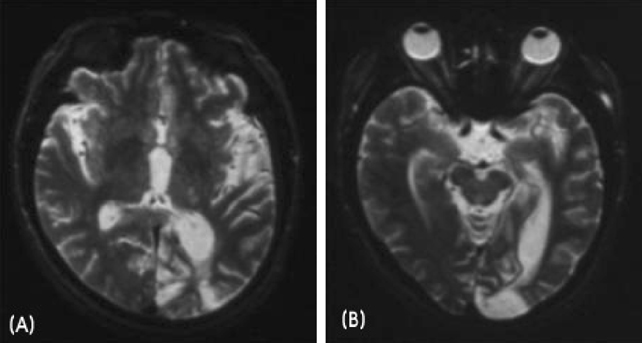J Clin Neurol.
2006 Dec;2(4):258-261. 10.3988/jcn.2006.2.4.258.
Optic Aphasia: A Case Study
- Affiliations
-
- 1Department of Neurology, University of Ulsan College of Medicine, Asan Medical Center, Korea. mskwon@amc.seoul.kr
- KMID: 1980466
- DOI: http://doi.org/10.3988/jcn.2006.2.4.258
Abstract
- Optic aphasia is a rare syndrome in which patients are unable to name visually presented objects but have no difficulty in naming those objects on tactile or verbal presentation. We report a 79-year-old man who exhibited anomic aphasia after a left posterior cerebral artery territory infarction. His naming ability was intact on tactile and verbal semantic presentation. The results of the systematic assessment of visual processing of objects and letters indicated that he had optic aphasia with mixed features of visual associative agnosia. Interestingly, although he had difficulty reading Hanja (an ideogram), he could point to Hanja letters on verbal description of their meaning, suggesting that the processes of recognizing objects and Hanja share a common mechanism.
Keyword
Figure
Reference
-
1. De Renzi E, Saetti MC. Associative agnosia and optic aphasia: qualitative or quantitative difference? Cortex. 1997. 33:115–130.
Article2. De Renzi E, Zambolin A, Crisi G. The pattern of neuropsychological impairment associated with left posterior cerebral artery infarcts. Brain. 1987. 110:1099–1116.
Article3. Iorio L, Falanga A, Fragassi NA, Grossi D. Visual associative agnosia and optic aphasia: a single case study and a review of the syndromes. Cortex. 1992. 28:23–37.
Article4. Chanoine V, Ferreira CT, Demonet JF, Nespoulous JL, Poncet M. Optic aphasia with pure alexia: a mild form of visual associative agnosia? A case study. Cortex. 1998. 34:437–448.
Article5. Schnider A, Benson DF, Scharre DW. Visual agnosia and optic aphasia; are they anatomically distinct? Cortex. 1994. 30:445–457.
Article6. Coslett HB, Saffran EM. Optic aphasia and the right hemisphere: a replication and extension. Brain and Language. 1992. 43:148–161.
Article7. Kang Y, Na DL. Seoul Neuropsychological Screening Battery. 2003. Incheon: Human Brain Research & Consulting Co..8. Kim H, Na DL. Korean Version - The Western Aphasia Battery. 2001. Seoul: Paradise Institute for Children with Disabilities.9. Kim H, Na DL. Korean version - Boston Naming Test. 1997. Seoul: Hakjisa Publishers.10. Kwon M, Kim JS, Lee JH, Sim H, Nam K, Park H. Double dissociation of Hangul and Hanja reading in Korean patients with stroke. European Neurology. 2005. 54:199–203.
Article11. Farah MJ, Feinberg TE. Feinberg TE, Farah MJ, editors. Visual object agnosia. Behavioral Neurology and Neuropsychology. 1997. New York: McGraw-Hill;239–244.12. Lee KM. Functional MRI comparison between reading ideographic and phonographic scripts of one language. Brain and Language. 2004. 91:245–251.
Article


